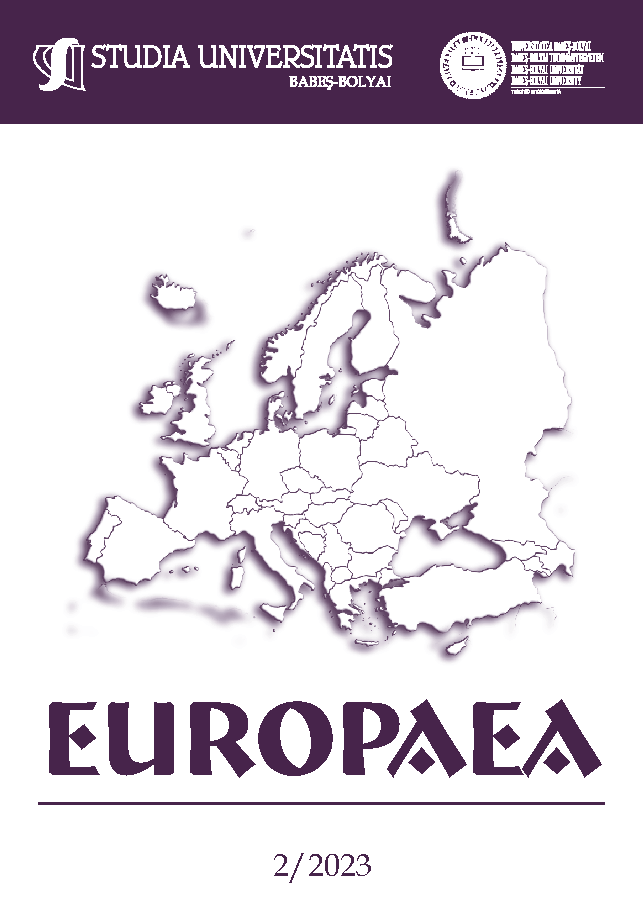SUFISM IN THE MODERN AND CONTEMPORARY IRANIAN POLITICS
DOI:
https://doi.org/10.24193/subbeuropaea.2023.2.10Keywords:
Sufism, Iran, politics, Shī’ism, propaganda, eschatologyAbstract
The objective of this article is to explore how political Sufism, in conjunction with political Shī’ism, influences contemporary Iranian internal and external affairs, the decision-making process, and the future political ideology. While religion has consistently been an integral part of Iranian state and culture, the primary faith has not always played a definitive role in political decisions throughout history, particularly in recent decades. To gain a deeper understanding of Iranian politics and its future trajectory, it is essential to comprehend the role of Sufi elements within it. This work elucidates the core political Sufi ideas and their persistence and development within Persian borders up to the present day, despite facing substantial opposition from the ulama. Furthermore, in order to identify these Sufi elements within the current Iranian political landscape, the article analyzes all presidential administrations since the Revolution and highlights how political Sufism has become ingrained in both the decision-making process and political propaganda.
References
Amanat, Abbas (2009), Apocalyptic Islam and Iranian Shī’ism, I.B Tauris: London, New York.
Ansari, Ali M. (2017), The Rafsanjānī and Khatami Presidencies, The Adelphi Papers, 47:393, pp. 11-22, DOI: 10.1080/05679320701868128.
Esposito, John L (2003), The Oxford Dictionary of Islam, 1st ed, Oxford University Press: New York.
Ghadamyari, Karamali (2012), “Sufism Impact on Iranian Society, Culture and Literature”, European Journal of Experimental Biology.
Goldziher, Ignaz (1981), Introduction to Islamic Theology and Law, Princeton N.J.: Princeton U.P.
Golkar, Saeid (2019), “Iran after Khamenei: Prospects for Political Change”, Middle East Policy, 26(1), pp. 75-88.
Gramlich, Richard (1965), The Shī’ah Dervish Orders of Persia 1: The Affiliations, German Oriental Society: Wiesbaden.
Juneau, Thomas (2014), “Iran under Rouhani: Still Alone in the World”, Middle East Policy, 21(4), pp. 92-104.
Kazemzadeh, Masoud (2013), “Ayatollah Khamenei's Foreign Policy Orientation”, Comparative Strategy, 32:5, pp. 443-458, DOI: 10.1080/01495933.2013.840208.
Keynoush, Banafsheh (2012), “Iran after Ahmadīnejād”, Survival: Global Politics and Strategy, 54:3, pp. 127-146, DOI: 10.1080/00396338.2012.690988.
Lewisohn, Leonard (1999), “An introduction to the history of modern Persian Sufism”, Bulletin of the School of Oriental and African Studies, University of London.
Milani, Mohsen M. (2007), “The Transformation of The Velayat-e Faqih Institution: From Khomeini to Khamenei”, The Muslim World, 82 (3-4), pp. 175-190.
Shahri, Ja'far (1990), Ta'rikh-i ijtima'i-yi Tihran dar qarn-i sizdahum, Moin: Tehran.
Sherrill, Clifton W. (2011), “After Khamenei: Who Will Succeed Iran’s Supreme Leader?”, Orbis, 55(4), pp. 631-647.
Stepanyants, Marietta (2009), “Sufism in the Context of Modern Politics”, The Journal of Oriental Studies.
US Bureau of Democracy, Human Rights, and Labor (2007), International Religious Freedom Report 2007: Iran.
Van den Bos, Matthijs (2007), Elements of Neo-Traditional Sufism in Iran, Sufism and the ‘Modern’ in Islam, ed. Martin van Bruinessen, Julia Day Howell, I.B Tauris: London, New York.
Van den Bos, Matthijs (2002), Mystic Regimes: Sufism and The State in Iran, From The Late Qajar Era to The Islamic Republic, Brill: Leiden, Boston, Köln.
Van den Bos, Matthijs (2002), “Sufi Authority in Khatami's Iran. Some Fieldwork Notes”, Oriente Moderno, vol. 21 (82), no. 2, pp. 351–378.
Downloads
Published
How to Cite
Issue
Section
License
Copyright (c) 2023 Studia Universitatis Babeș-Bolyai Europaea

This work is licensed under a Creative Commons Attribution-NonCommercial-NoDerivatives 4.0 International License.






